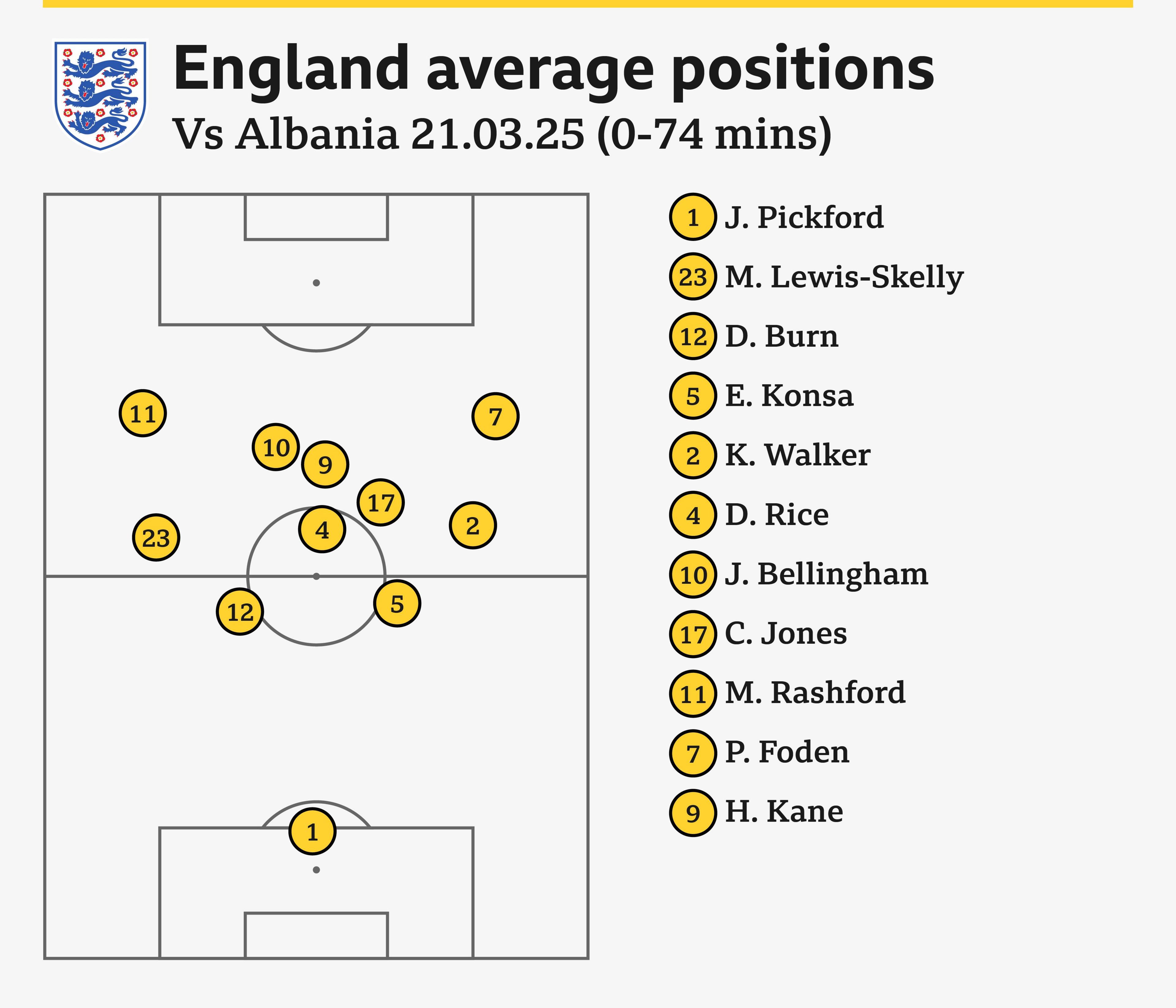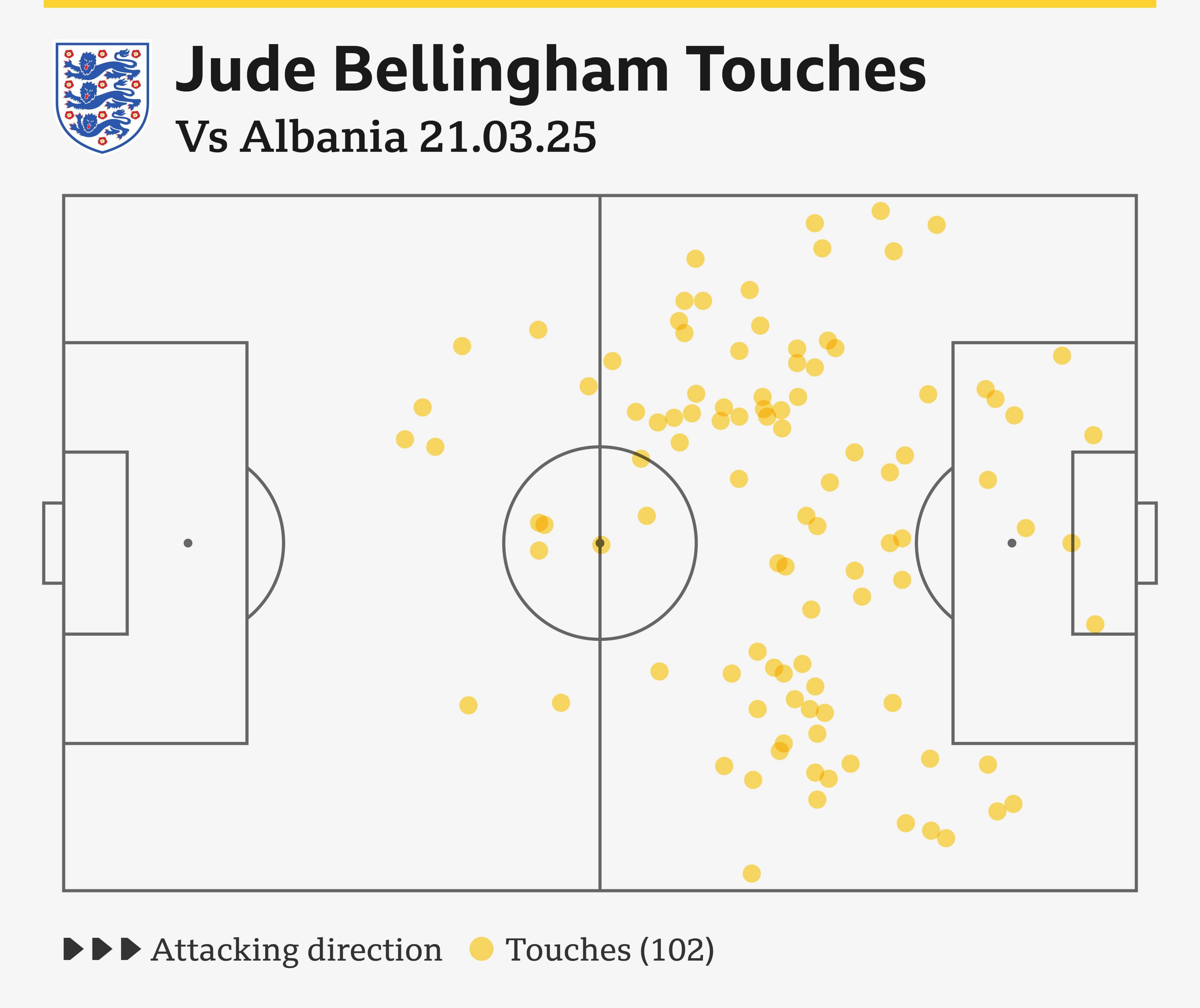
Four Tactical Lessons We Learned from Tuchel’s First England Games
A New Era Begins, but Progress Will Take Time
And yet, despite the predictable nature of England’s wins, there were early signs of tactical evolution. Tuchel’s attention to detail and flexibility were evident, even if his team has yet to fully adapt to his ideas.
Here are four key tactical takeaways from Tuchel’s first matches in charge.
1. Tuchel’s Demand for Urgency is Easier Said Than Done
One thing is already clear: Thomas Tuchel loves talking tactics.
In the days between England’s matches, he openly questioned formations and tactical setups, pondering whether a 4-1-4-1 would offer “enough control” or if modern football is too “fluid” for Declan Rice to operate alone as a single pivot. He also debated whether playing with dual No.10s would limit England’s wingers or unlock their attacking potential.
This level of tactical transparency is a huge shift from Gareth Southgate, who was often criticized for his cautious approach and reluctance to experiment.
However, for all Tuchel’s detailed planning, England still struggled to execute his vision. The biggest issue? Lack of speed in ball progression.
After England’s 1-0 win over Latvia, Tuchel admitted:
“We started too slow, playing without movement—which makes no sense. We didn’t want to do this.”
Following the 2-0 victory against Albania, he was still searching for answers:
“I’m not sure why we struggled to get the ball to the wingers quicker. I need to review the match.”
England clearly fell short of Tuchel’s high expectations, but this is just the start. Establishing a high-intensity, attack-minded philosophy will take time, especially with players who spent years under Southgate’s measured, possession-based system.
2. Two Different Midfield Setups Show Tuchel’s Tactical Flexibility

England midfield three in more of a triangle shape in Tuchel’s first game
One of the biggest tactical differences between Southgate’s England and Tuchel’s England lies in midfield structure.
In both matches, Tuchel experimented with two distinct midfield shapes, each offering clues about his long-term vision.
🔹 Against Albania: England played a 4-1-4-1, with Curtis Jones and Jude Bellingham operating as high number eights, pushing forward aggressively while Declan Rice anchored the midfield.
🔹 Against Latvia: Tuchel tweaked the system to a 3-4-2-1, forming a box midfield with Miles Lewis-Skelly and Rice at the base, while Bellingham and Morgan Rogers played ahead as attacking midfielders.
This shift marks a clear departure from Southgate’s preference for a double pivot. Instead of two deep-lying midfielders focused on control, Tuchel wants a dynamic, attack-oriented setup with dual playmakers operating between the lines.
The key takeaway? England’s midfield under Tuchel will be much more aggressive, featuring more vertical movement, quicker transitions, and creative risks.
3. Inverted Full-Backs & Midfield Tweaks: Tuchel is Thinking Ahead

England Jude Bellingham had a looser midfield role in Tuchel’s first game
Tuchel’s desire to field dual No.10s presents a defensive challenge—can Declan Rice handle the defensive workload alone?
Tuchel’s early solution? Inverting full-backs into midfield.
🔹 Against Albania, Curtis Jones occasionally dropped deeper to provide support alongside Rice, working as a temporary “double six”.
🔹 Against Latvia, Tuchel took it a step further by inverting Lewis-Skelly into midfield, shifting England into a more fluid 3-2-4-1 shape in possession.
This approach allows England to maintain defensive solidity while still committing numbers forward—a key principle of Tuchel’s possession-based attacking football.
Tuchel also experimented with Reece James as an inverted right-back, a tactic frequently used by Pep Guardiola at Manchester City.
After the match, Tuchel explained:
“In dominant matches, Reece can step into midfield and help create overloads. But if it’s an open game with lots of transitions, I’m not sure it suits him.”
This early concern suggests Tuchel is already thinking beyond qualifiers against weaker teams. He’s planning ahead for Euro 2026, where England will face elite counter-attacking nations.
The challenge will be balancing attacking freedom with defensive structure—a dilemma Tuchel must solve in the coming months.
4. Tuchel Wants Aggressive Wingers—But They Need More Support
One of Tuchel’s most striking tactical shifts has been his emphasis on direct wingers.
After the Albania game, he stated:
“We need more impact from our wingers—more dribbling, more aggressive runs into the box. The chances come from those little runs in behind, and we didn’t do it enough.”
Marcus Rashford and Phil Foden struggled in the first match, but against Latvia, Rashford responded:
✅ 6 chances created
✅ 11 crosses attempted
✅ Consistently stretched the defense
Tuchel wants his wingers to play with urgency, but there’s a tactical problem—they’re often isolated without overlapping full-backs.
This is similar to Manchester City’s struggles this season, where wingers like Jack Grealish and Jeremy Doku have often lacked support due to Guardiola’s narrow full-back positioning.
Tuchel’s solution? Using dual No.10s to relieve the pressure on wingers.
🔹 Against Latvia, Bellingham frequently made off-ball runs into the left channel, supporting Rashford.
🔹 Against Albania, Rice’s late surge into the box helped create space for Kane’s goal.
Tuchel’s biggest challenge will be balancing defensive structure and attacking width. If he sacrifices overlapping full-backs for midfield dominance, wingers could struggle to impact games.
His ideal solution? All players must contribute to forward runs, just like Lewis-Skelly’s intelligent movement for his goal against Albania.
This “verticality”—a constant push to break defensive lines—is the defining difference between Tuchel’s England and Southgate’s more cautious approach.
Final Thoughts: A Tactical Evolution in Progress

Tuchel’s England is still a work in progress, but the early signs suggest a clear tactical vision:
✅ Faster, more aggressive transitions
✅ A midfield built around dual playmakers
✅ More inverted full-back movements
✅ An emphasis on verticality & attacking intent
These first two games didn’t revolutionize England overnight, but they gave us a glimpse of what’s to come.
With tougher tests ahead, Tuchel’s next challenge is refining his tactics against stronger opposition. If he can find the right balance, England might finally have a system capable of winning major tournaments.
Only time will tell.


































There are no comments yet. Be the first to comment!